Nanotechnology Applications
With nanotechnology, a large set of materials and improved products rely on a change in the physical properties when the feature sizes are shrunk. Nanoparticles, for example, take advantage of their dramatically increased surface area to volume ratio. When brought into a bulk material, nanoparticles can strongly influence the mechanical properties of the material, like stiffness or elasticity. In the construction industry, nanotechnology has potential to improve.
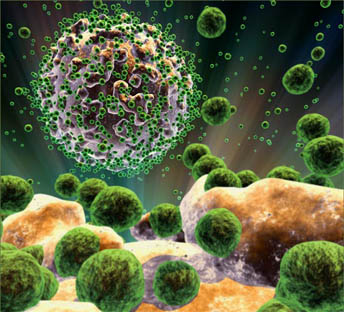 Nanomedicine is an application of nanotechnology in the field of medicine
Nanomedicine is an application of nanotechnology in the field of medicine
construction materials, including steel, polymers and concrete. There are numerous applications of nanotechnology. Many everyday products are the direct result of nanotechnology applications. The manipulation of particles that are smaller than most people can imagine is able to create products that enrich our everyday lives.
Nanotechnology involves the creation of material derived from the manipulation of particles as smaller than atoms. Nanoemulsion is one form of nanotechnology that produces liquid products like cleaners and disinfectants for swimming pools that are not harmful to humans. Over the counter bandages are effective at killing germs and protecting cuts thanks to nanotechnology. The ions literally smother or suffocate the bacteria. Sports benefit from the products of nanotechnology as well. The tennis rackets created with this type of nanotechnology are stronger than the steel used to build weatherproof buildings. The tennis balls benefit as well as one of the applications of nanotechnology.
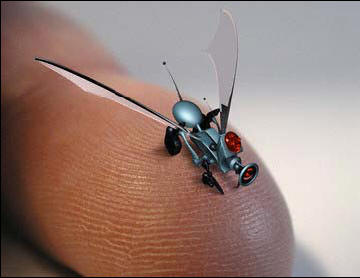 There are numerous applications of nanotechnology
There are numerous applications of nanotechnology
Technological applications of nanotechnology include the creation of nano—batteries, tiny capacitors, and nearly microscopic microprocessors. This type of nanotechnology brings smaller computers with heartier capabilities. Nanotechnology has additionally produced a digital screen that can be flexed and bent without losing resolution. As an application of nanotechnology there is a while host of practical applications that can be thought up using a flexible high resolution screen. There is a company using the application of nanotechnology to create something known as “self cleaning glass.” The nanoparticles used in the process are photocatalytic, which means that the sun engages the nanoparticles.
Nanoparticles in coatings
Coatings is an important area in construction coatings are extensively use to paint the walls, doors, and windows. Coatings should provide a protective layer which is bound to the base material to produce a surface of the desired protective or functional properties. The coatings should have self healing capabilities through a process of “self-assembly.” Nanotechnology is being applied to paints to obtained the coatings having self healing capabilities and corrosion protection under insulation. Since these coatings are hydrophobic and repels water from the metal pipe and can also protect metal from salt water attack. Nanoparticle based systems can provide better adhesion and transparency. The TiO2 coating captures and breaks down organic and inorganic air pollutants by a photocatalytic process, which leads to putting roads to good environmental use.
Sports
Nanotechnology may also play a role in sports such as soccer, football, and baseball. Materials for new athletic shoes may be made in order to make the shoe lighter (and the athlete faster). Baseball bats already on the market are made with carbon nanotubes which reinforce the resin, which is said to improve its performance by making it lighter. Other items such as sport towels, yoga mats, exercise mats are on the market and used by players in the National Football League, which use antimicrobial nanotechnology to prevent illnesses caused by bacteria such as Methicillin-resistant Staphylococcus aureus (commonly known as MRSA).
Construction
Nanotechnology has the potential to make construction faster, cheaper, safer, and more varied. Automation of nanotechnology construction can allow for the creation of structures from advanced homes to massive skyscrapers much more quickly and at much lower cost.
Diagnostics
Nanotechnology-on-a-chip is one more dimension of lab-on-a-chip technology. Magnetic nanoparticles, bound to a suitable antibody, are used to label specific molecules, structures or microorganisms. Gold nanoparticles tagged with short segments of DNA can be used for detection of genetic sequence in a sample. Multicolor optical coding for biological assays has been achieved by embedding different-sized quantum dots into polymeric microbeads. Nanopore technology for analysis of nucleic acids converts strings of nucleotides directly into electronic signatures.
Optics
The first sunglasses using protective and anti-reflective ultrathin polymer coatings are on the market. For optics, nanotechnology also offers scratch resistant surface coatings based on nanocomposites. Nano-optics could allow for an increase in precision of pupil repair and other types of laser eye surgery.
Medicine
Researchers are developing customized nanoparticles the size of molecules that can deliver drugs directly to diseased cells in your body. The biological and medical research communities have exploited the unique properties of nanomaterials for various applications (e.g., contrast agents for cell imaging and therapeutics for treating cancer). Functionalities can be added to nanomaterials by interfacing them with biological molecules or structures. The size of nanomaterials is similar to that of most biological molecules and structures; therefore, nanomaterials can be useful for both in vivo and in vitro biomedical research and applications. Thus far, the integration of nanomaterials with biology has led to the development of diagnostic devices, contrast agents, analytical tools, physical therapy applications, and drug delivery vehicles.
Tissue engineering
Nanotechnology can help reproduce or repair damaged tissue. “Tissue engineering” makes use of artificially stimulated cell proliferation by using suitable nanomaterial-based scaffolds and growth factors. For example, bones can be regrown on carbon nanotube scaffolds. Tissue engineering might replace today’s conventional treatments like organ transplants or artificial implants. Advanced forms of tissue engineering may lead to life extension.
Novel semiconductor devices
The so called tunneling magnetoresistance (TMR) is very similar to GMR and based on the spin dependent tunneling of electrons through adjacent ferromagnetic layers. In 1999, the ultimate CMOS transistor developed at the Laboratory for Electronics and Information Technology in Grenoble, France, tested the limits of the principles of the MOSFET transistor with a diameter of 18 nm (approximately 70 atoms placed side by side). This was almost one tenth the size of the smallest industrial transistor in 2003 (130 nm in 2003, 90 nm in 2004, 65 nm in 2005 and 45 nm in 2007). Two promising examples are photonic crystals and quantum dots. Quantum dot lasers are cheaper and offer a higher beam quality than conventional laser diodes.
Textiles
The use of engineered nanofibers already makes clothes water- and stain-repellent or wrinkle-free. Textiles with a nanotechnological finish can be washed less frequently and at lower temperatures. Nanotechnology has been used to integrate tiny carbon particles membrane and guarantee full-surface protection from electrostatic charges for the wearer. Many other applications have been developed by research institutions such as the Textiles Nanotechnology Laboratory at Cornell University.
Cosmetics
One field of application is in sunscreens. The traditional chemical UV protection approach suffers from its poor long-term stability. A sunscreen based on mineral nanoparticles such as titanium dioxide offer several advantages. Titanium oxide nanoparticles have a comparable UV protection property as the bulk material, but lose the cosmetically undesirable whitening as the particle size is decreased.
Displays
The production of displays with low energy consumption could be accomplished using carbon nanotubes (CNT). Carbon nanotubes are electrically conductive and due to their small diameter of several nanometers, they can be used as field emitters with extremely high efficiency for field emission displays (FED). The principle of operation resembles that of the cathode ray tube, but on a much smaller length scale.
Quantum computers
Entirely new approaches for computing exploit the laws of quantum mechanics for novel quantum computers, which enable the use of fast quantum algorithms. The Quantum computer has quantum bit memory space termed “Qubit” for several computations at the same time. This facility may improve the performance of the older systems.
Nanoparticles and steel
The use of nanotechnology in steel helps to improve the properties of steel. This has a significant impact on the life-cycle costs of structures and limits the effective use of resources.The Stress risers are responsible for initiating cracks from which fatigue failure results .The addition of copper nanoparticles reduces the surface un-evenness of steel which then limits the number of stress risers and hence fatigue cracking. The nano-size steel produce stronger steel cables which can be in bridge construction. The capacity of high strength bolts is obtained through quenching and tempering. When the tensile strength of tempered martensite steel exceeds 1,200 MPa even a very small amount of hydrogen embrittles the grain boundaries and the steel material may fail during use. The use of vanadium and molybdenum nanoparticles improves the delayed fracture problems associated with high strength bolts reducing the effects of hydrogen embrittlement and improving the steel micro-structure through reducing the effects of the inter-granular cementite phase.
Drug delivery
Nanotechnology has been a boon for the medical field by delivering drugs to specific cells using nanoparticles. The overall drug consumption and side-effects can be lowered significantly by depositing the active agent in the morbid region only and in no higher dose than needed. This highly selective approach reduces costs and human suffering. A targeted or personalized medicine reduces the drug consumption and treatment expenses resulting in an overall societal benefit by reducing the costs to the public health system. This rapid rise may cause difficulties with toxicity, and drug efficacy can diminish as the drug concentration falls below the targeted range.
Agriculture
Applications of nanotechnology have the potential to change the entire agriculture sector and food industry chain from production to conservation, processing, packaging, transportation, and even waste treatment. NanoScience concepts and nanotechnology applications have the potential to redesign the production cycle, restructure the processing and conservation processes and redefine the food habits of the people. Major challenges related to agriculture like low productivity in cultivable areas, large uncultivable areas, shrinkage of cultivable lands, wastage of inputs like water, fertilizers, pesticides, wastage of products and of course Food security for growing numbers can be addressed through various applications of nanotechnology.
Nano-foods
New foods are among the nanotechnology-created consumer products coming onto the market at the rate of 3 to 4 per week, according to the Project on Emerging Nanotechnologies (PEN), based on an inventory it has drawn up of 609 known or claimed nano-products. On PEN’s list are three foods—a brand of canola cooking oil called Canola Active Oil, a tea called Nanotea and a chocolate diet shake called Nanoceuticals Slim Shake Chocolate. According to company information posted on PEN’s Web site, the canola oil, by Shemen Industries of Israel, contains an additive called “nanodrops” designed to carry vitamins, minerals and phytochemicals through the digestive system and urea.
Nanoparticles in glass
The glass is also an important material in construction.There is a lot of research being carried out on the application of nanotechnology to glass.Titanium dioxide (TiO2) nanoparticles are used to coat glazing since it has sterilizing and anti-fouling properties. The particles catalyze powerful reactions which breakdown organic pollutants, volatile organic compounds and bacterial membranes.
The TiO2 is hydrophilic (attraction to water) which can attract rain drops which then wash off the dirt particles.Thus the introduction of nanotechnology in the Glass industry, incorporates the self cleaning property of glass. Fire-protective glass is another application of nanotechnology. This is achieved by using a clear intumescent layer sandwiched between glass panels (an interlayer) formed of silica nanoparticles (SiO2) which turns into a rigid and opaque fire shield when heated.Most of glass in construction is on the exterior surface of buildings. So the light and heat entering the building through glass has to be prevented. The nanotechnology can provide a better solution to block light and heat coming through windows.
Household
The most prominent application of nanotechnology in the household is self-cleaning or “easy-to-clean” surfaces on ceramics or glasses. Nano ceramic particles have improved the smoothness and heat resistance of common household equipment such as the flat iron.
Foods
Complex set of engineering and scientific challenges in the food and bioprocessing industry for manufacturing high quality and safe food through efficient and sustainable means can be solved through nanotechnology. Bacteria identification and food quality monitoring using biosensors; intelligent, active, and smart food packaging systems; nanoencapsulation of bioactive food compounds are few examples of emerging applications of nanotechnology for the food industry. Nanotechnology can be applied in the production, processing, safety and packaging of food. A nanocomposite coating process could improve food packaging by placing anti-microbial agents directly on the surface of the coated film. Nanocomposites could increase or decrease gas permeability of different fillers as is needed for different products. They can also improve the mechanical and heat-resistance properties and lower the oxygen transmission rate. Research is being performed to apply nanotechnology to the detection of chemical and biological substances for sensanges in foods.
Nanoparticles in fire protection and detection
Fire resistance of steel structures is often provided by a coating produced by a spray-on-cementitious process.The nano-cement has the potential to create a new paradigm in this area of application because the resulting material can be used as a tough, durable, high temperature coating. It provides a good method of increasing fire resistance and this is a cheaper option than conventional insulation.
Vehicle manufacturers
Much like aerospace, lighter and stronger materials will be useful for creating vehicles that are both faster and safer. Combustion engines will also benefit from parts that are more hard-wearing and more heat-resistant.
Catalysis
Chemical catalysis benefits especially from nanoparticles, due to the extremely large surface to volume ratio. The application potential of nanoparticles in catalysis ranges from fuel cell to catalytic converters and photocatalytic devices. The synthesis provides novel materials with tailored features and chemical properties: for example, nanoparticles with a distinct chemical surrounding (ligands), or specific optical properties. In this sense, chemistry is indeed a basic nanoscience. In a short-term perspective, chemistry will provide novel “nanomaterials” and in the long run, superior processes such as “self-assembly” will enable energy and time preserving strategies. Platinum nanoparticles are now being considered in the next generation of automotive catalytic converters because the very high surface area of nanoparticles could reduce the amount of platinum required. Ongoing research at the Centre National de la Recherche Scientifique (CNRS) in France may resolve their true usefulness for catalytic applications.
Aerospace
Lighter and stronger materials will be of immense use to aircraft manufacturers, leading to increased performance. Spacecraft will also benefit, where weight is a major factor. Nanotechnology would help to reduce the size of equipment and there by decrease fuel-consumption required to get it airborne. Hang gliders may be able to halve their weight while increasing their strength and toughness through the use of nanotech materials. Nanotech is lowering the mass of supercapacitors that will increasingly be used to give power to assistive electrical motors for launching hang gliders off flatland to thermal-chasing altitudes.
Memory Storage
Electronic memory designs in the past have largely relied on the formation of transistors. However, research into crossbar switch based electronics have offered an alternative using reconfigurable interconnections between vertical and horizontal wiring arrays to create ultra high density memories. Two leaders in this area are Nantero which has developed a carbon nanotube based crossbar memory called Nano-RAM and Hewlett-Packard which has proposed the use of memristor material as a future replacement of Flash memory.
Energy
The most advanced nanotechnology projects related to energy are: storage, conversion, manufacturing improvements by reducing materials and process rates, energy saving (by better thermal insulation for example), and enhanced renewable energy sources. A reduction of energy consumption can be reached by better insulation systems, by the use of more efficient lighting or combustion systems, and by use of lighter and stronger materials in the transportation sector. Currently used light bulbs only convert approximately 5% of the electrical energy into light. Nanotechnological approaches like light-emitting diodes (LEDs) or quantum caged atoms (QCAs) could lead to a strong reduction of energy consumption for illumination.Commercially available solar cells have much lower efficiencies (15-20%). Nanotechnology could help increase the efficiency of light conversion by using nanostructures with a continuum of bandgaps.
You might also like
| What is Nanotechnology? Nanotechnology is the engineering... | What is Nanobiotechnology ? Nanobiotechnology - Meaning and Definition Bionanotechnology... | Nanotechnology in Cancer Nanotechnology and Cancer The use of nanotechnology... | Nanotechnology Solar Cells Nanotechnology Solar Panels - Using Nanotechnology... |
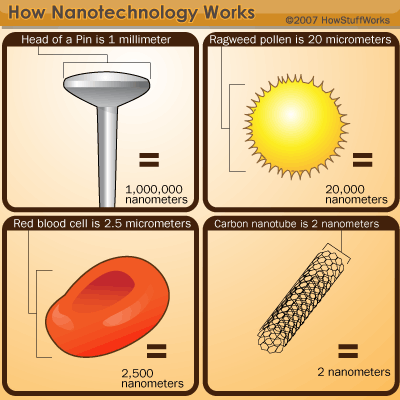
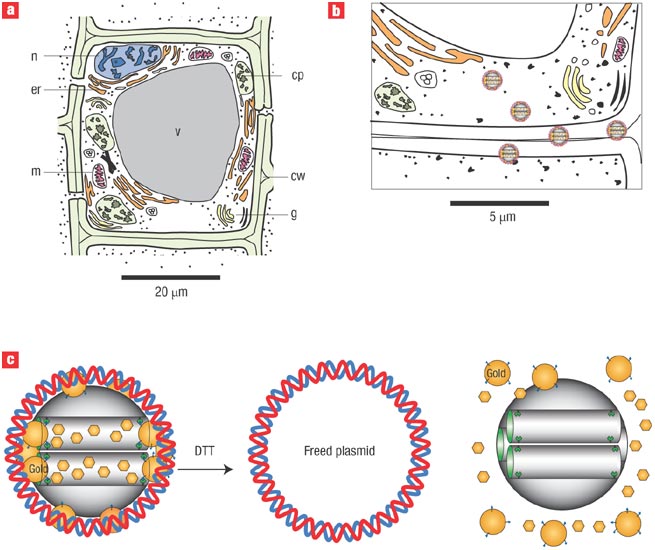
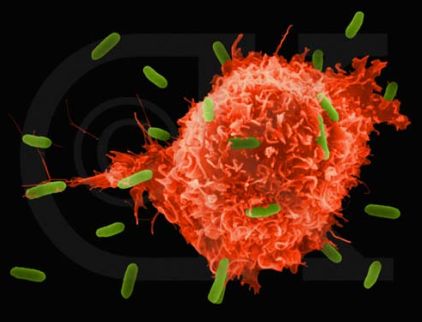
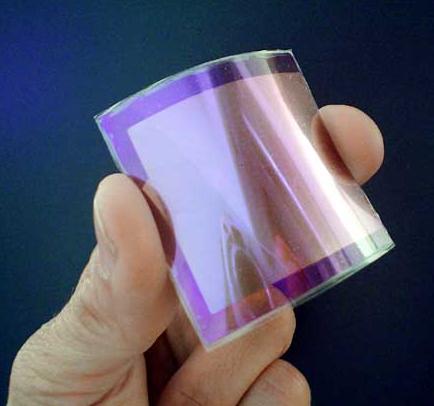
 Alloy Suppliers
Alloy Suppliers
 Aluminum
Aluminum
 Aluminum Extrusions
Aluminum Extrusions
 Copper-Brass-Bronze
Copper-Brass-Bronze
 Nickel
Nickel
 Magnets
Magnets
 Stainless Steel
Stainless Steel
 Stainless Steel Tubing
Stainless Steel Tubing
 Steel Service Centers
Steel Service Centers
 Titanium
Titanium
 Tungsten
Tungsten
 Wire Rope
Wire Rope